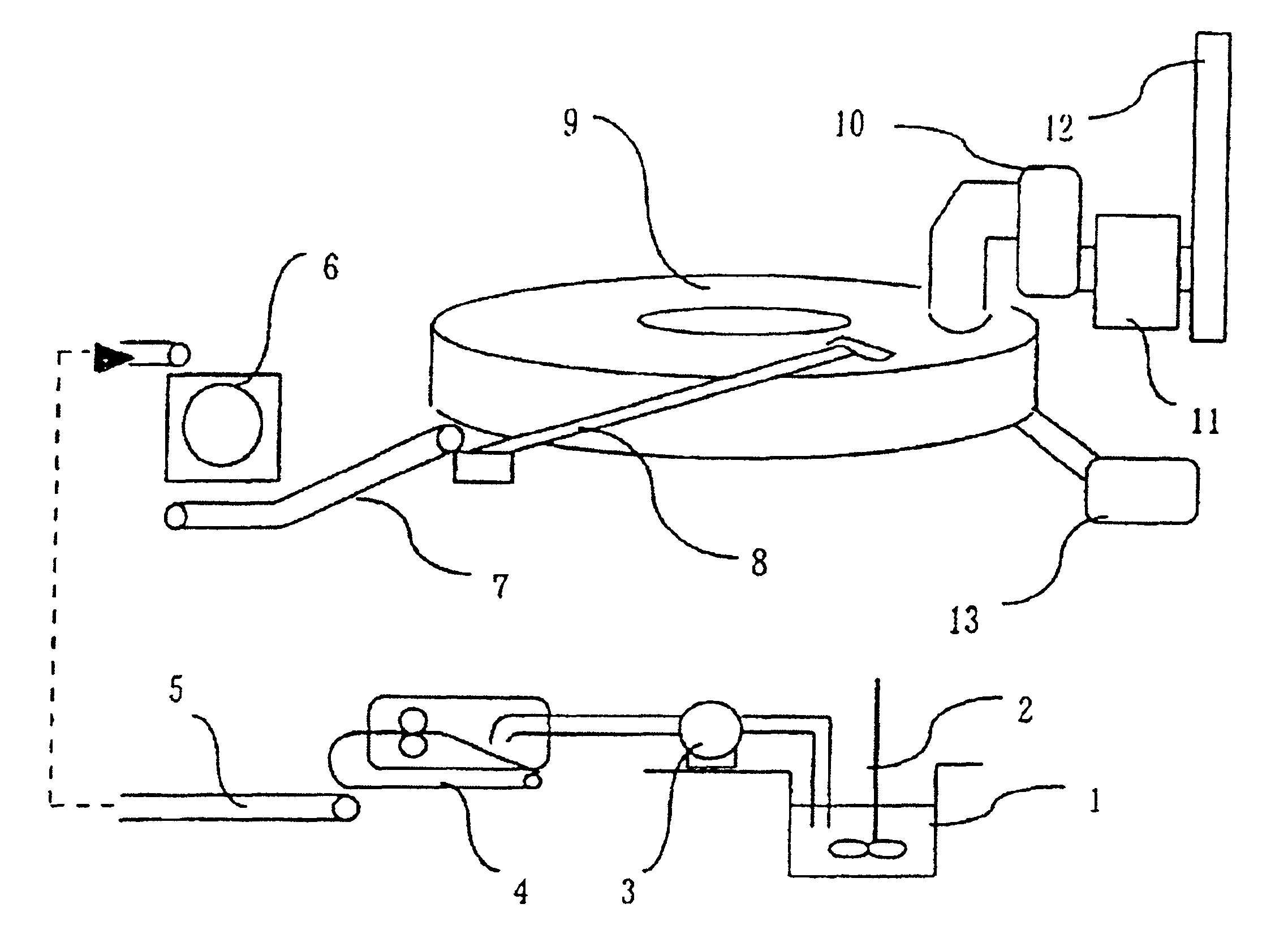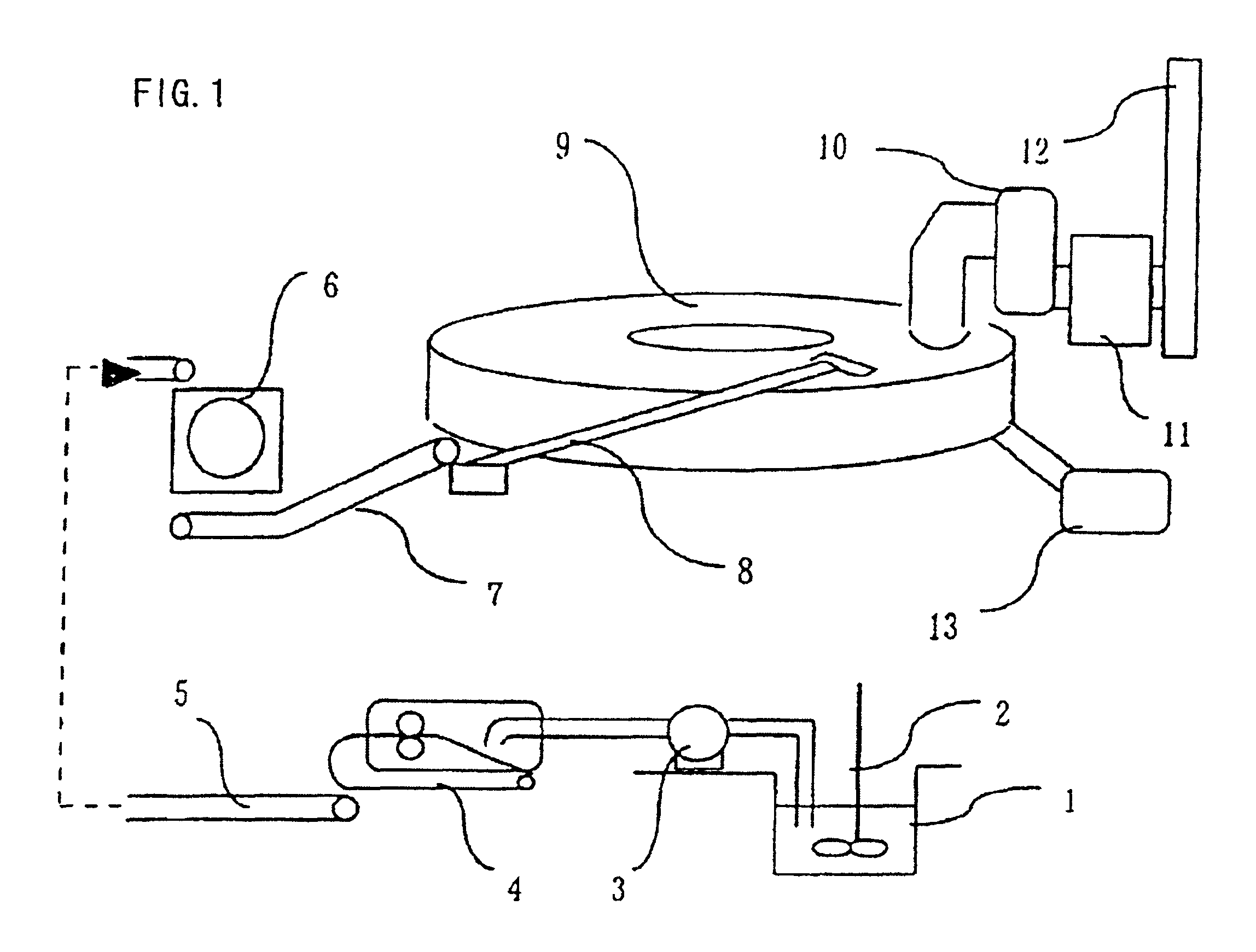Facility for reducing metal oxide, method for operating the facilities and moldings as raw material to be charged to reduction furnace
a technology of metal oxide and reduction furnace, which is applied in the direction of furnaces, crucible furnaces, furnace types, etc., can solve the problems of high production cost, high production cost, and high degree of metallization
- Summary
- Abstract
- Description
- Claims
- Application Information
AI Technical Summary
Benefits of technology
Problems solved by technology
Method used
Image
Examples
example 1
is the case of an operation which used pellet feed. Since the carbon mixing ratio was appropriate, its productivity was high. The operation was performed at a degree of metallization of as high as 97% and was substantially free from powdering due to a fall and explosive-cracking, so that its agglomerate production yield was as high as 94%. Example 2 is the case of operation with the use of blast furnace gas sludge and sedimentary sludge of scale pit generated by the hot rolling, aiming at not only reduction but also dezincification and dealkalization. In this operation, the degree of metallization was 91%, the degree of dezincification was 97.5%, and the degree of dealkalization was 99%. As can be seen from these figures, impurities were effectively eliminated. This case was also substantially free from powdering due to a fall and explosive-cracking, so that its agglomerate production yield was as high as 95%.
The reduction according to the present invention and that according to a c...
examples 3 , 4
EXAMPLES 3, 4
As the raw materials, as shown in Table 2, two types of mixtures were employed, one of which is the mixture of pellet feed being a microfine powdery ore and coke breeze of 1 mm or less and the other is the mixture of blast furnace gas sludge from a through-steel manufacturing plant, sedimentary sludge of scale pit generated by the hot rolling, and coke breeze of 1 mm or less.
The operation conditions are as shown in Table 2. The moisture content of the raw material in the mixing vessel 1 is 120 to 200% of the mass of the powder, and that of the raw material before molding is 17 to 20% of the mass of the powder. The powder filling rate is within the range specified in the present invention. The diameter and length of each shaped article are 15 mm and 25 mm, respectively. The furnace temperature of the shaped article supplying part is about 980.degree. C. The furnace temperature of the reduction zone is 1210.degree. C. Moreover, the reduction time is 15 minutes.
example 3
is the case of an operation which used pellet feed. Since the carbon mixing ratio was appropriate, its productivity was high. The operation was performed at a degree of metallization of as high as 97% and was substantially free from powdering due to a fall and explosive-cracking, so that its agglomerate production yield was as high as 94%. Example 4 is the case of operation with the use of blast furnace gas sludge and sedimentary sludge of scale pit generated by the hot rolling, aiming at not only reduction but also dezincification and dealkalization. In this operation, the degree of metallization was 91%, the degree of dezincification was 97.5%, and the degree of dealkalization was 99%. As can be seen from these figures, impurities were effectively eliminated. This case was also substantially free from powdering due to a fall and explosive-cracking, so that its agglomerate production yield was as high as 95%.
The reduction according to the present invention and that according to a c...
PUM
| Property | Measurement | Unit |
|---|---|---|
| temperatures | aaaaa | aaaaa |
| temperatures | aaaaa | aaaaa |
| diameter | aaaaa | aaaaa |
Abstract
Description
Claims
Application Information
 Login to View More
Login to View More - R&D
- Intellectual Property
- Life Sciences
- Materials
- Tech Scout
- Unparalleled Data Quality
- Higher Quality Content
- 60% Fewer Hallucinations
Browse by: Latest US Patents, China's latest patents, Technical Efficacy Thesaurus, Application Domain, Technology Topic, Popular Technical Reports.
© 2025 PatSnap. All rights reserved.Legal|Privacy policy|Modern Slavery Act Transparency Statement|Sitemap|About US| Contact US: help@patsnap.com



